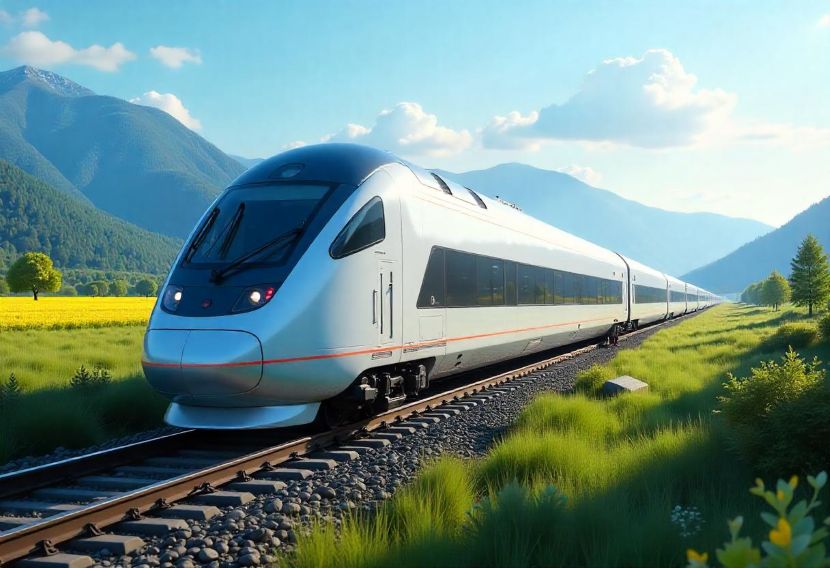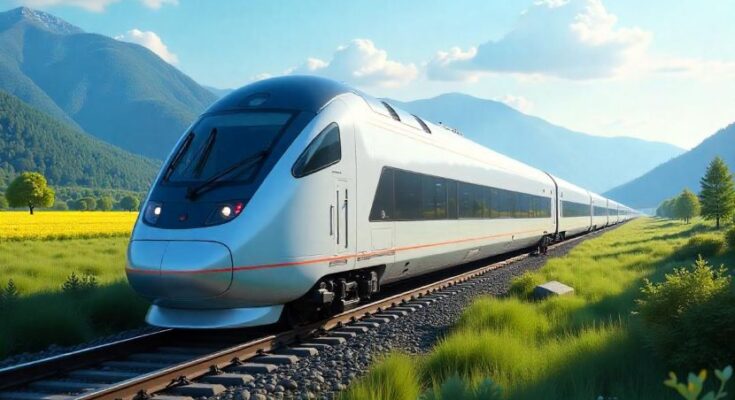Saturday, July 12, 2025

The introduction of hydrogen-powered trains is expanding the frontier of U.S. railway transport, offering cleaner, greener alternatives to typical diesel-powered locomotives. The new technological innovation, however, requires a complete replacement of railway infrastructure, protection installations, and functioning systems. Hydrogen trains are becoming more and more a replacement to reduce emissions in the transport industry, yet a shift to the technology entails many problems. These include the building up of new hydrogen fueling and maintenance stations, staff retraining, and tunnel system upgrading to new protection requirements.
Industry leaders from Jacobs, HDR, Ricardo LLC, and the San Bernardino County Transportation Authority (SBCTA) recently gathered to discuss hydrogen-powered rail preparedness at the recent APTA Rail Conference. The conference fostered a discussion on ground-level practical issues and technicalities spawned by applying fuel cell technology to the US railway system. The conversation centered on the industry needing to redesign its assumptions from fuel storage to fire protection to assist the US on the path to a greener future for its railways.
Transitioning to Hydrogen: The Case For Purpose-Built Infrastructure
The hydrogen fuel is sold as a cleaner fuel to substitute common diesel engines, while hydrogen behaves otherwise within utilization settings. Hydrogen requires special care, Jacobs’ Martin Schroeder elaborates, while hydrogen itself is very inflammable. Hydrogen trains require upgrade infrastructure, e.g., tunnels, refueling, and maintenance infrastructure, to function effectively. The upgrade is essential while hydrogen requires stored and special refueling procedure to prevent the risk of accidents.
The SBCTA opens the way to hydrogen rail utilization within the US, and its FLIRT H2 hydrogen fuel train will enter service in August 2025. The agency has invested to build special-purpose buildings to house hydrogen fueling and maintenance. The facility has advanced protection features like deflagration panels, gas detectors, and automatic shut-off capability to contain hydrogen safely.
The SBCTA project was not just choosing green trains, but new protection features specially adapted to hydrogen’s characteristics, the SBCTA’s Joy Buenaflor explained, highlighting that the project was much broader than just choosing a green train—with new protection procedures, training staff, and reconsidering ventilation on tunnels and depots among them.
Hydrogen Train Safety: Tunnel and Emergency Preparation Focus
The protection of hydrogen-powered trains remains center focus, especially when risks are being discussed within tunnels. The dispersion characteristics of hydrogen are much distinct from diesel or electric trains, and therefore, emergency conditions within enclosed spaces should be kept in view accordingly. Schroeder elaborated further on the aspect that airflow simulations within tunnels are highly relevant to hydrogen dispersion while there are leaks. Appropriate ventilation within tunnels reduces the possibilities of fire, playing an important role to prevent accidents.
Also, fire departments know how to work alongside hydrogen-powered trains while responding to emergencies. Hydrogen-powered trains are not riskier or more dangerous to ride on than diesel-powered trains, but responding to hydrogen leaks while there’s an emergency situation requires different procedure. HDR’s Marcin Taraszkiewicz went on to say that fire departments should be trained on responding to these units just in case there’s an emergency situation or fire. He suggested that protection procedure to work on hydrogen trains isn’t to avoid fires only—they’re to know the right procedure to follow when there’s an issue.
The SBCTA was one better by training local first responders along the way. Acclimating them to the new facility and to the nuances of hydrogen-powered trains such that during an emergency, response teams will know just what to expect and won’t hesitate to act on those expectations.
Business and Travel Impact: What Hydrogen Trains Will Mean to the U.S. Rail Industry The transition to hydrogen trains has countless environmental,commercial, and tourism repercussions. As the United States’train industry moves to greener technologies, there will certainly be further incentive to opt for green means of transport. For corporate travelers, hydrogen trains deliver a new, green means to travel that will increasingly become prominent within corporate calendars as companies look to meet their sustainability goals.
For tourists, the shift to hydrogen trains could mean more viable, climate-compatible means to travel on long-distance journeys within the United States. The green status of hydrogen-powered railway travel may encourage tourists to choose to journey by railway instead of airliner, especially to places where railway links are strong. This could, in its own right, translate to additional train routes, which are able to link additional regions and cities in an eco-friendly way.
Nonetheless, the hydrogen train conversion will not take place overnight. The infrastructure to support such trains, including refueling and maintenance depots, is still being created. Passengers who anticipate traveling on hydrogen-powered trains should ask about schedules within their routes of such trains because they are still being tested and rolled out.
Fast Facts and Travelers’ Guide to Hydrogen-Fueled Rail
Stay Up to Date on New Routes: When hydrogen trains come into service, stay informed about new service and new route introductions by railway suppliers. The trains will take a number of years before they travel on all major routes.
Support Sustainable Travel: Opt for greener travel methods whenever you can. Hydrogen-powered trains reduce the carbon footprint of long-distance travel.
Be Prepared for Travel Infrastructure Upgrades: As the railway sector approaches switching to hydrogen technology, there are certainly stations and infrastructure that are being established or upgraded to receive such trains.
Stay Current on Safety Precautions: Riding on a hydrogen train, you should know that hydrogen trains are highly safe to ride on. Emergency procedures and staff training are being highlighted to mitigate risk and create a safe traveling experience.
Consider Travel by Train on Business: Hydrogen trains can be an attractive mode of travel by businessmen who want an environmentally friendly way to journey between cities within the U.S. and reduce their environmental impact to zero.
Towards the Green Future of US Rail Travel The introduction of hydrogen trains to America is a big step into the future for the country’s railway network. While the upgrade involves large-scale investing on infrastructure and training of personnel, the long-range benefit to the environment and to the industry of tourism is real.
Hydrogen-powered railway, as an alternative to the traditional diesel trains, holds the promise to revolutionize the manner by which Americans travel, offering a cleaner, greener means to travel, not just to travel and tourism, but even to companies, as well. As a trailblazer to hydrogen railways, US train travel’s future has never looked greener and technological before. As a regular leisure or business traveler, hydrogen trains will give a novel, cleaner means to travel up and down within the US within the near future.
Tags: California, Eco-Friendly Transportation, Flinders, fuel cell trains, green transportation, HDR, hydrogen rail safety, Hydrogen Rail Technology, hydrogen trains, Hydrogen-Powered Rail, Jacobs, Los Angeles, Rail Innovation, san bernardino county, SBCTA, sustainable travel, U.S. Business Travel, U.S. Rail Industry, U.S. Rail Travel, United States




